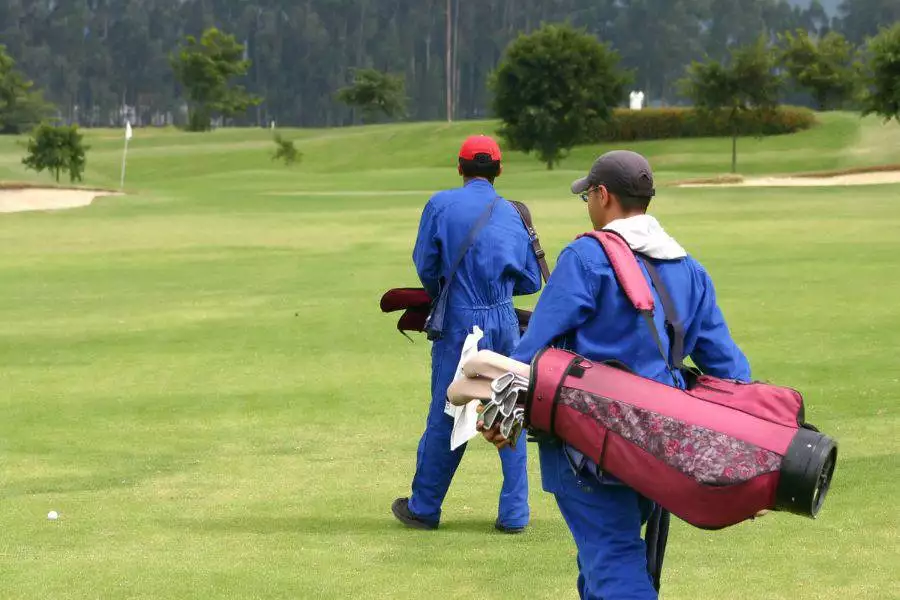Who are the richest caddies in golf? How much do caddies make?
These are good questions because caddies can make a lot of money helping their player win and score well in tournaments.
Today we’ll help reveal the highest paid caddy ever, share more about the history of caddies, and their main responsibilities for players.
The Best Paid Golf Caddies Today

It’s not easy to determine the exact amount caddies earn as it changes with each player-caddy relationship. It’s easy to know how much PGA Tour players earn as each event has a purse and payouts listed.
But knowing how much caddies earn is a lot more difficult than players. You might wonder, “How much does a PGA caddy make?”
Caddies are paid two ways; weekly salaries and they receive bonuses based on how well a player does in a tournament. The better the finish, the more money for both the caddy and player.
Here are the richest golf caddies – in no particular order – over the years.
It is estimated that a caddy can make up to $2,500 per week during the most lucrative tournaments. Most of the time, pay received will include such things as travel and out-of-pocket costs (initially these are incurred by the caddies themselves).
A good caddy in golf is highly valued. Decent professional golfers will seek out the best in the game to work for them, and will want to reward them sufficiently in order to retain their loyalty and service.
In turn, the caddy has an interest in helping the player to succeed, as both benefit as a consequence.
The Best Paid Golf Caddies Today
Data published following the PGA tour of 2020, the most recent figures available at the time of writing, shows the following caddies to be the highest paid on that year’s circuit:
Jimmy Johnson

Jimmy is the caddy for former world number one golfer Justin Thomas. Johnson earned more than $500,000 in one year, making him one of the highest paid in the business.
However, they parted ways a few years ago and Justin Thomas got Jim McKay to leave his broadcasting career to get back on the bag.
Jonathan Jakovac
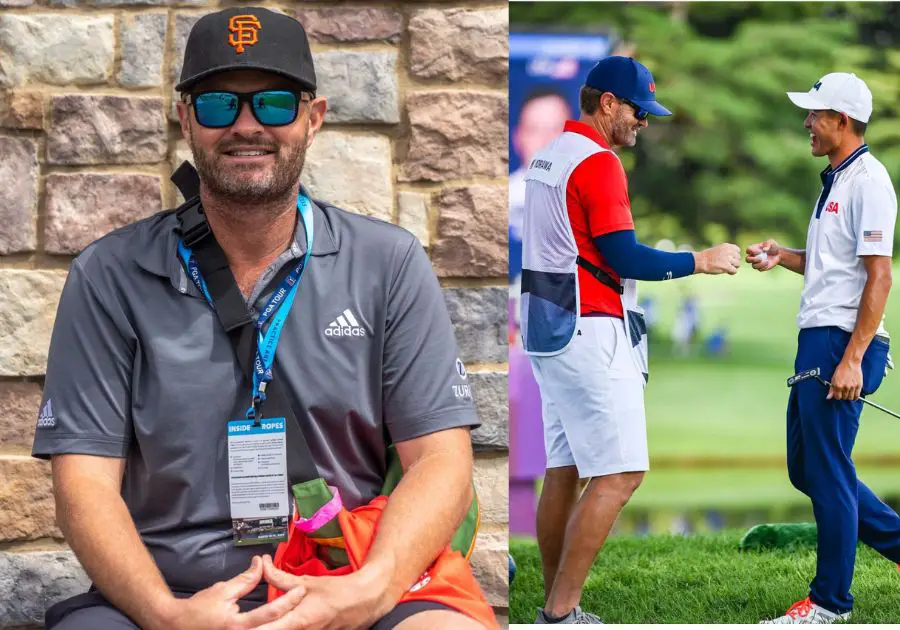
Jakovac linked up with Collin Morikawa after having served Ryan Moore, and went on to see him win the PGA Championship.
Jakovac earned over $482,000 dollars in one year but likely isn’t earning as much as Colin hasn’t won in a few years.
However, he still remains a top money leader so Jonathan is likely doing very well financially.
Austin Johnson
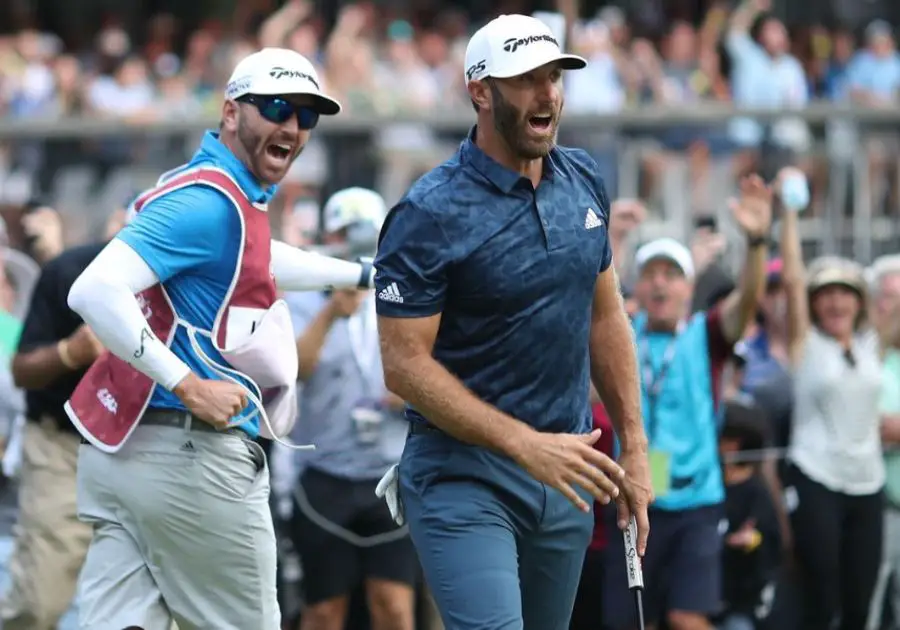
The caddy for his older brother Dustin Johnson, winner of the Masters in November 2020.
That year it’s estimated that he received close to $472,600.
DJ also took a massive payday for joining LIV Golf and it’s safe to say Austin is making even more money too.
It was rumored that he went to school for pharmaceutical sales but his career as a caddy seems to be working out quite well.
Paul Tesori
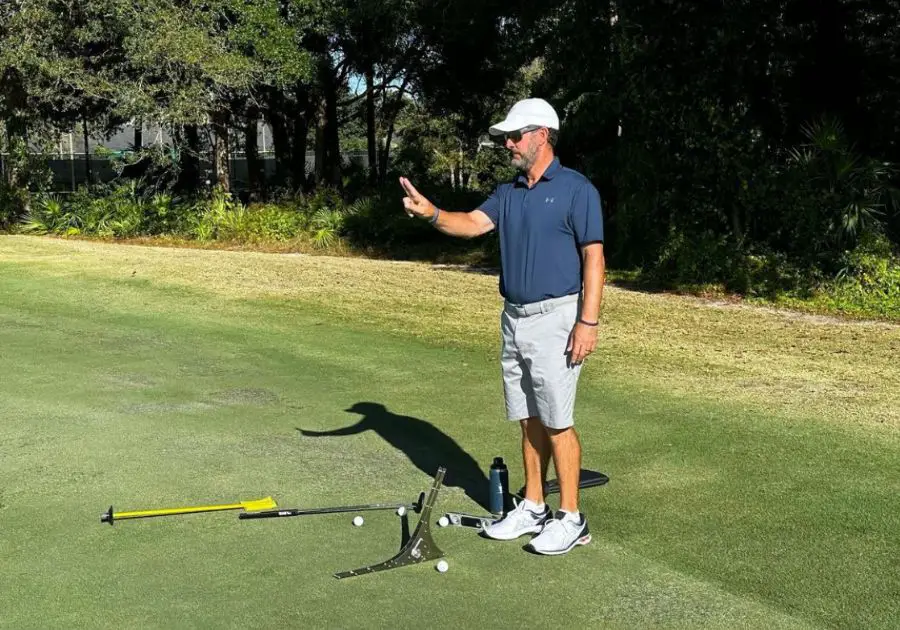
Paul loops for Webb Simpson, the latter re-emerging as a world top ten player after triumphing at the Waste Management Phoenix Open in 2020.
Tesori scored around $420,000 for his work a few years ago and is one of the highest paid caddies in golf.
Adam Hayes

Adam Hayes is the caddy for Jon Rahm who has won all sorts of tournaments in the past few years.
He also saw his player’s name at the top of the Masters leaderboard in 2023 securing his second major victory.
2020 was also a good year for Hayes, netting him some $375,000 in earnings. Needless to say, Adam and Jon are doing quite well financially.
Tim Tucker
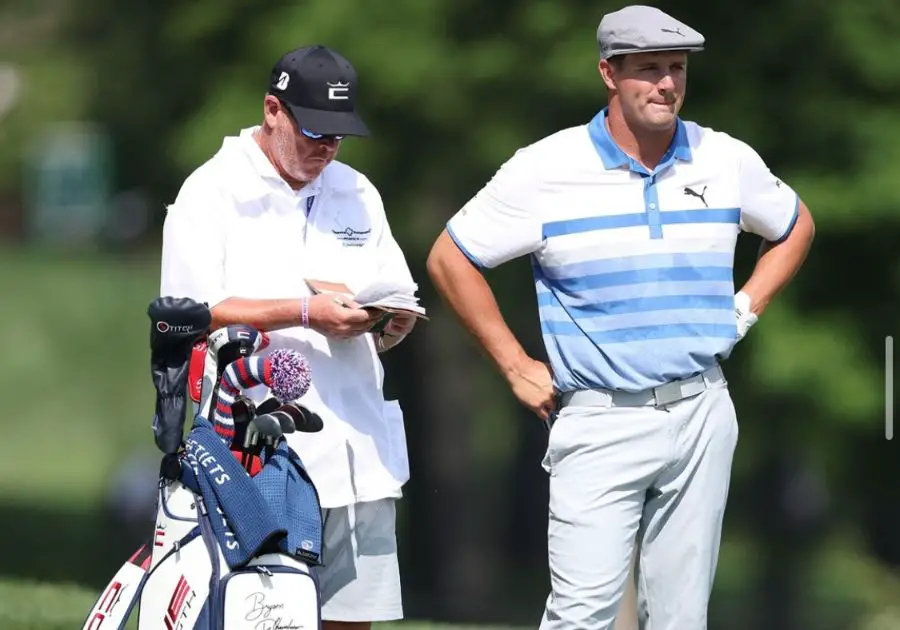
Tim Tucker worked for Bryson DeChambeau, also known as “The Scientist” for his methodical approach.
When he won the US Open in 2020 it left Tucker with something in the region of $350,000.
Unfortunately, the partnership didn’t last and Bryson has since parted ways. He even fired him the night before a tournament while some sources say Tim quit.
However, Tim partnered with Kurt Kitayma and helped him win at Bay Hill, beating out some big names.
He might not be making as much money as he did with Bryson but he’s still looping on the PGA Tour which is always a big accomplishment.
Josh Cassell

Served on the PGA tour card for Daniel Berger, a top American golf player whose father Jay had been a world-ranked tennis professional.
Berger picked up a check for $1.375 million after winning the Charles Schwab Challenge, with Cassell being paid $343,000.
Michael Greller
Michael Greller is Jordan Spieth’s caddy and someone that earns every penny.
If you hear him and Jordan Speith talking it’s an exhaustive process at times but it clearly works out.
They’ve been working together since 2011 and seem like one of the best duos in golf. It’s been reported that he earns more than $600,000 per year!
Some reports even mention that his net worth is more than 10 million dollars too.
Mark Crane
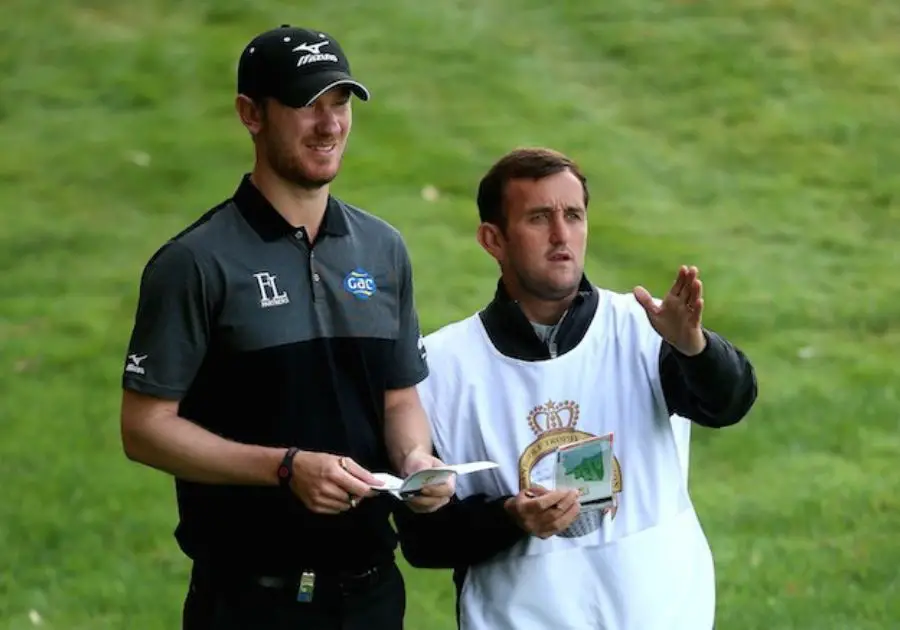
Professional caddy to Tyrrell Hatton, an Englishman who took the 2020 Arnold Palmer Invitational on the PGA Tour.
Hatton went on to represent Europe in the 2021 and 2023 Ryder Cup.
Crane made $287,000 for his work in 2020 and has likely done quite well since then.
Tyrrell is quite a character often shouting obscenities and talking to himself on the golf course so his caddy earns every penny.
Ted Scott
Another rich caddie in the golf world is Ted Scott who loops for Scottie Scheffler.
Scottie has had a crazy few years winning several PGA Tour events and a major championship.
Golf Digest published a good article on him as well. Prior to working with Scottie he helped Bubba Watson win two majors and looped for Paul Azinger as well.
Also earning $287k in 2020 was prolific caddy Limanti, who has worked for a host of pro golfers including Adam Scott, Chris Kirk, Aaron Baddeley and Kyle Stanley.
Tim Mickelson
Another well known and high paid caddy is Tim Mickelson who caddies for his brother Phil.
After Phil Mickelson parted ways with his caddy “Bones” he linked up with brother.
Tim left his head coaching job to loop for his brother on the LIV Golf series.
He’s a big part of his team and safe to say he’s made a lot of money as Phil was rumored to make nearly 200M by joining LIV.
Harry Diamond
Harry is the caddy for Rory McIlroy who is the face of the PGA Tour.
Rory is also one of the top earners in the game which means his caddy is doing quite well too.
Reports estimate that Harry Diamond is worth more than 15 million!
The pair have worked together since 2017 and it doesn’t seem like it’ll end anytime soon.
Jim Bones Mackay
Jim – who was nicknamed Bones by Freddy Couples – is arguably the most popular caddy in golf.
He was on the bag for Phil Mickelson for more than a decade and helped him win many events and several majors.
After they parted ways Jim got into broadcasting and did an incredible job. But Justin Thomas lured him out of caddy retirement and has been working together ever since.
Joe Lacava
Another well known and well paid caddy is Joe Lacava who has worked with top players like Dustin Johnson, Davis Love III, Tiger Woods, and now Patrick Cantlay.
He was also the center of controversy at the 2023 Ryder Cup where he got into an altercation with Rory McIlroy.
He’s done quite well for himself in the golf world with an estimated net worth of more than two million dollars.
Steve Williams
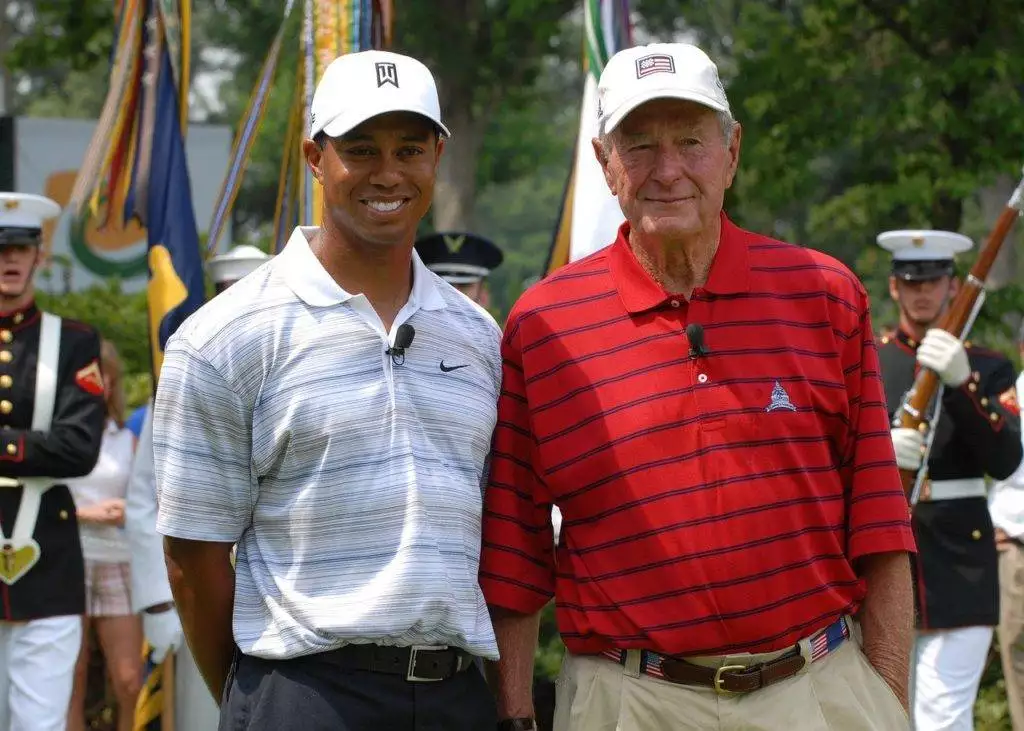
If you’re wondering who is the highest paid caddy in golf? It’s hard to argue against Steve Williams. Not only the richest but the most well known caddy in golf.
He was Tiger Woods’ caddy for most of his career and helped Tiger win during his most dominant stage of his career. He’s since caddied for Adam Scott as well and helped him win a green jacket at Augusta National.
Steve Williams net worth is in the region of $20 million during his long career! Not bad for working with the GOAT and being a part of golf history.
The Responsibilities of a Golf Caddy
Being a golf caddy is not just about carrying a player’s golf clubs and equipment around the course. Other roles include:
- Cleaning clubs.
- Course management skills
- Helping manage their players emotions.
- Helping read greens and determine different lies.
And a lot more… they’re part caddy, part sports psychologist, part swing coach, and friend to players.
Course management is also an essential responsibility of a caddy. This means being aware of the layout of each hole as well as being mindful of its general condition prior to a competition.

If necessary obstacles may be removed, and information will be relayed as to such things as putting distances and any idiosyncrasies relating to the specific venue.
In short, the caddy becomes the golf player’s eyes and ears prior to the commencement of the match.
During the round a loyal caddy will be on hand to replace divots, and also to attend to any bunkers which may require raking. Even keeping members of the public at bay who may venture too close can become the job of the caddy in golf.
On top of the practical work, there is also a pastoral role to be fulfilled by caddies.
Being on hand to take care of all the problems which might arise enables the player to focus his or her mind on the actual task ahead.
Common Questions
Is it caddie or caddy?
It’s a good question but both are used in the golf world.
According to the experts, one is a golfer’s attendant whilst the other is a British vessel for carrying tea. But even the so-called experts concede that it is okay to use the word “caddy” to describe a golfer’s helper, and both spellings are often used.
Where its connections with golf are concerned though the word derives from the French “cadet”, or a “trainee”.
Either way, golfers will know what you’re referring to.
How long have caddies been around in golf?
It was in Scotland, the home of golf, that the first recorded use of caddies took place in 1817.
Although there is some suggestion that the Duke of Albany employed the services of such an assistant at an international event at Leith Links way back in 1681.
For many years caddying remained a phenomenon exclusive to that little part of the world, but gradually it became more widely practiced amongst top-level golf clubs everywhere.
Assistance was generally “hired out” by the clubs themselves, rather than being brought along in tow by individual golfers.
It was only after the second World War that pro golfers began to employ their own personal caddies.
Do golf caddies earn a lot of money?
It depends on the professional tour and their player more than anything else. If they’re on the PGA Tour or LIV Golf they’ll make a lot more than mini tours or the LPGA Tour (as there are higher purses).
Typically, PGA Tour caddies will supplement their basic salary with a percentage of any winnings earned by their player. This can mean up to 10% of a successful player’s purse, reducing to about seven percent for a top ten performance.
It is estimated that a caddy can make up to $2,500 per week or more during the most lucrative tournaments.
Most of the time, pay received will include such things as travel and out-of-pocket costs (initially these are incurred by the caddies themselves).
A good caddy in golf is highly valued. Decent professional golfers will seek out the best in the game to work for them, and will want to reward them sufficiently in order to retain their loyalty and service.
In turn, the caddy has an interest in helping the player to succeed, as both guys will benefit.
How much do caddies make at the Masters?
Until a few decades ago players had to use a caddy that was hired by Augusta National for the tournament. But things have changed and now players can bring their own caddies and pay them accordingly.
Closing Thoughts
Caddies can make a lot of money if they can help their player win or finish higher up on the leaderboard.
While they might not get a lot of credit, they can help a player more than most people realize. Not only with getting the distances for each shot and reading greens but the mental side of things too.
Which person surprised you most on this list of highest paid caddies?

